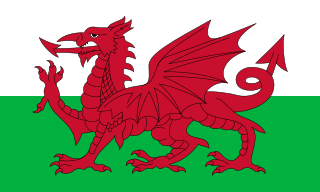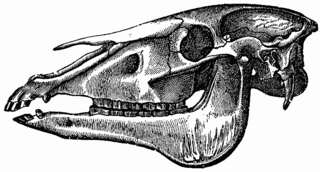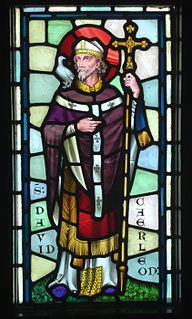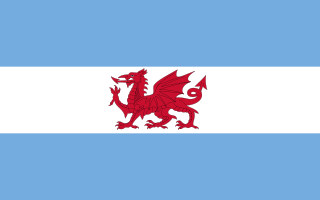 W
WWales is a country in Great Britain that has a distinctive culture, including its own language, customs, politics, holidays and music. Wales is primarily represented by the symbol of the red Welsh Dragon, but other national emblems include the leek and the daffodil.
 W
WThe Books Council of Wales or Cyngor Llyfrau Cymru was established in 1961. Today it is funded by the Welsh Government. The council's aims are to promote the interests of Welsh language books and English language books of interest to Wales, to promote the publishing industry, and to assist and support authors by offering a number of services and distributing grants. It offers design and editorial services for publishers, distributes grants for authors and publishers, and provides services for libraries.
 W
WThe Celtic longboat is a rowing boat used for coastal and ocean rowing, racing, training and recreation. It has four sweep-oared rowers and a cox.
 W
WCool Cymru was a Welsh cultural movement centred around music, independent film, and other artistic endeavours by young Welsh figures prior to and during the new millennium. It was highlighted in 1999 when the BBC announced that year as the "year of Cool Cymru".
 W
WThe Dafydd ap Gwilym Society is the Welsh society at the University of Oxford. It is a Welsh language society, as opposed to a society of Welsh people like its sister-society in Cambridge, the Mabinogi Society.
 W
WGregynog is a large country mansion in the village of Tregynon, 4 miles (6.4 km) northwest of Newtown in the old county of Montgomeryshire, now Powys in mid Wales. There has been a settlement on the site since the twelfth century. From the fifteenth to the nineteenth century it was the home of the Blayney and Hanbury-Tracy families. In 1960 it was transferred to the University of Wales as a conference and study centre by Margaret Davies, granddaughter of the nineteenth century industrial magnate and philanthropist, David Davies 'Top Sawyer' of Llandinam.
 W
WThe name Gwennan Gorn is given to a ship reportedly designed and built by a sea-voyager named Madog ab Owain Gwynedd in a document by Welsh copyist and collector Roger Morris written in the 1580s. According to this document:Madog ab Owain Gwynedd was a great sea-voyager and eager to travel and because he could by no other means enter the Sugnedd, he did make and build a ship without iron, but nailed it with stag's horn so that that sea would not swallow her; and called her Gwenangom [the white one of horn] because of the way she was made; and in her he sailed the seas at his pleasure and travelled to many lands across the sea without any fear, but on returning home, near Bardsey the currents (ffirydie) shook her cruelly and threw her far off course and for this reason that place in the sea has ever since been called Ffrydie Caswenan. This story came from one hand to another under credible guarantee down to this day. So it was told to me by Edward ap Sion Wynn the 13 of March 1582.
 W
WThese are the main holidays traditionally celebrated in Wales that are not shared with the rest of the United Kingdom. Except for those that fall at the same time as UK public holidays, none of these holidays are bank holidays. There is, however, much support for the recognition of St David's Day as a bank holiday in Wales, in the same way as St Patrick's Day in Northern Ireland, and St Andrew's Day in Scotland.
 W
WThe Honourable Society of Cymmrodorion, often called simply the Cymmrodorion, is a London-based Welsh learned society, with membership open to all. It was first established in 1751 as a social, cultural, literary and philanthropic institution. It fell into abeyance between 1787 and 1820, and again between 1843 and 1873. In its second and third incarnations its interests have been predominantly cultural and antiquarian. The present society claims continuity from that founded in 1751, although the three successive societies have in fact been slightly different in character and aims.
 W
WIn Ireland, England, Wales, and the Scandinavian Peninsula, the skulls of horses have been found concealed in the structures of buildings, usually under the foundation or floor. Horse skulls have also been found in buildings in the United States, although in far fewer numbers. As part of the larger folk tradition of concealing objects in structures, horse skulls are related to concealed shoes, dried cats, and witch bottles.
 W
WThe investiture of the Prince of Wales is the ceremony formally acknowledging a new Prince of Wales. The prince is presented and invested with the insignia of his rank and dignity, in the manner of a coronation. An investiture is purely ceremonial, as the title is created via letters patent.
 W
WJesus College is one of the constituent colleges of the University of Oxford in England. It is in the centre of the city, on a site between Turl Street, Ship Street, Cornmarket Street and Market Street. The college was founded by Elizabeth I on 27 June 1571 for the education of clergy, though students now study a broad range of secular subjects. A major driving force behind the establishment of the college was Hugh Price, a churchman from Brecon in Wales. The oldest buildings, in the first quadrangle, date from the 16th and early 17th centuries; a second quadrangle was added between about 1640 and about 1713, and a third quadrangle was built in about 1906. Further accommodation was built on the main site to mark the 400th anniversary of the college, in 1971, and student flats have been constructed at sites in north and east Oxford.
 W
WRichard Dafydd Vivian Llewellyn Lloyd, known by his pen name Richard Llewellyn, was a British novelist.
 W
WThe London Welsh Centre is a community and arts centre on Gray's Inn Road, in the London Borough of Camden. The centre is owned and run by the London Welsh Trust.
 W
WWelsh mythology consists of both folk traditions developed in Wales, and traditions developed by the Celtic Britons elsewhere before the end of the first millennium. As in most of the predominantly oral societies Celtic mythology and history were recorded orally by specialists such as druids. This oral record has been lost or altered as a result of outside contact and invasion over the years. Much of this altered mythology and history is preserved in medieval Welsh manuscripts, which include the Red Book of Hergest, the White Book of Rhydderch, the Book of Aneirin and the Book of Taliesin. Other works connected to Welsh mythology include the ninth-century Latin historical compilation Historia Brittonum and Geoffrey of Monmouth's twelfth-century Latin chronicle Historia Regum Britanniae, as well as later folklore, such as the materials collected in The Welsh Fairy Book by William Jenkyn Thomas (1908).
 W
WNantgarw tradition is a style of Morris dancing from the South and Valleys regions of Wales, specifically associated with the small village of Nantgarw. The style encompasses both handkerchief and stick dances. The dances call for eight dancers in four pairs. There are now five dances in the Nantgarw tradition: Y Gaseg Eira, Hela'r Sgwarnog, Ty Coch Caerdydd, Y Derwydd and Y Goron. They are most frequently performed by Cardiff Morris. The style was first put into dance notation by Dr. Ceinwen Thomas (1911-2008) who wrote down what her mother, Catherine Margretta Thomas, could remember of the dances that had been danced locally when she was young.
 W
WSaint David's Day, or the Feast of Saint David, is the feast day of Saint David, the patron saint of Wales, and falls on 1 March, the date of Saint David's death in 589 AD. The feast has been regularly celebrated since the canonisation of David in the 12th century, by Pope Callixtus II, though it is not a public holiday in the UK.
 W
WSt David's School was an independent girls' school in Ashford, England. The school was originally established in London in 1716 as the British Charity School or Welsh Charity School. It was located in a purpose-built home on Clerkenwell Green from 1738, before moving to Gray's Inn Road in 1772, and eventually to Ashford in 1857. It was at first a boys' school, and then from 1758 co-educational, but from 1882 it began to admit girls only and became known as the Welsh Girls' School. It changed its name to St David's School in 1967, and closed in 2009.
 W
WThe Senedd, formally known as the Welsh Parliament in English and Senedd Cymru in Welsh, is the devolved, unicameral legislature of Wales. A democratically elected body, it makes laws for Wales, agrees certain taxes and scrutinises the Welsh Government. It is a bilingual institution, with both Welsh and English being the official languages of its business. From its creation in May 1999 until May 2020, the Senedd was known as the National Assembly for Wales.
 W
WSheep shearing is the process by which the woollen fleece of a sheep is cut off. The person who removes the sheep's wool is called a shearer. Typically each adult sheep is shorn once each year. The annual shearing most often occurs in a shearing shed, a facility especially designed to process often hundreds and sometimes more than 3,000 sheep per day.
 W
WThe St Davids Society of Singapore was established for the purpose of bringing together Welsh people with others who wish to further Welsh culture, and to commemorate each year, in loyal manner the death of their National Patron Saint. The Welsh community in Singapore have celebrated the feast of St David since at least 1912 with the earliest mention in the Straits Times that the Welsh community marked the occasion at the Grand Hotel de L’Europe. where the Supreme Courts stand today.
 W
WThe Sunday Closing (Wales) Act 1881 was an Act of the Parliament of the United Kingdom. It was one of the Licensing Acts 1828 to 1886. It required the closure of all public houses in Wales on Sundays. The Act had considerable political importance as a formal acknowledgement of the separate character of Wales, setting a precedent for future legislation and decisions. It was repealed in 1961.
 W
WThe Welsh Intermediate Education Act 1889 was an Act of the Parliament of the United Kingdom.
 W
WWelsh literature is any literature originating from Wales or by Welsh writers:Welsh-language literature for literature in the Welsh language Welsh literature in English for literature in the English language
 W
WThe Welsh Mam was an archetypal image of Welsh married women, especially popular in 19th-century industrial South Wales, and depictions of that place and era.
 W
WFixed surnames were adopted in Wales from the 15th century onwards. Until then, the Welsh had a patronymic naming system.
 W
WThe place-names of Wales derive in most cases from the Welsh language, but have also been influenced by linguistic contact with the Romans, Anglo-Saxons, Vikings, Anglo-Normans and modern English. Toponymy in Wales reveals significant features of the country's history and geography, as well as the development of the Welsh language. Its study is promoted by the Welsh Place-Name Society.
 W
WY Wladfa, also occasionally Y Wladychfa Gymreig, refers to the establishment of settlements by Welsh immigrants in Patagonia, beginning in 1865, mainly along the coast of the lower Chubut Valley. In 1881, the area became part of the Chubut National Territory of Argentina which, in 1955, became Chubut Province.